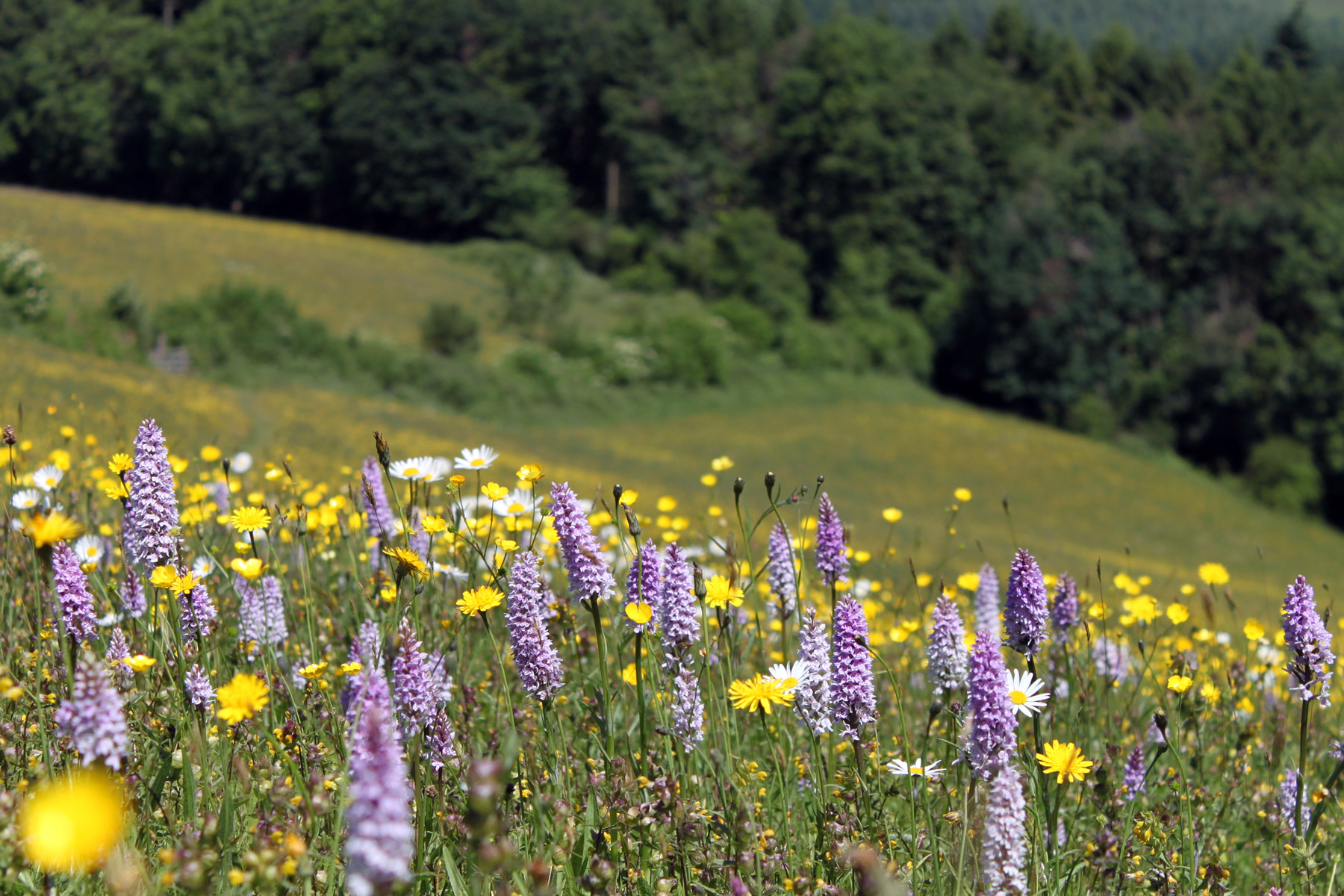Plant identification and monitoring
ID books, guides, videos and equipment
Our two favourite ID guides are Collins Wildflower Guide 2nd edition, Streeter et al. and The Wildflower Key, Francis Rose see 5:30 into the video below. And the Field Studies Council sell Grassland plants 1 and Grasses guide
Another excellent grass ID guide has also recently been released A Field Guide to Grasses, Sedges and Rushes by Dominic Price
Hand lenses – ideally x20 (or x15; x10) good range of quality and price available from NHBS
Rapid Monitoring Method
Use the field sheet for rapid plant monitoring for baseline monitoring of your meadow and then once a year after changing management or introducing seed or green hay.
A Microsoft excel version of the field sheet can be downloaded Here
Will all recorders, new or returning to the meadow again to monitor the progress of their projects, remember the following basic points:
- We ARE NOT asking for records of grasses, sedges or rushes during your 10 random stops as it is very difficult to obtain sound data across our now wide membership, and doing so adds greatly to the time taken (however you may of course record them for your own reasons if you wish);
- We ARE asking for records of ALL broad-leaved herbs you encounter in your sample, whether on the list or not, so add in additional species in the blanks provided. These additional species can provide valuable insights when we assess the whole dataset for the County. Remember to include tree and shrub seedlings if yours is a pasture restoration prone to colonisation by woody species. Don’t guess if in difficulty – there are many resources available to help with plant ID now, and we continue to accept in-focus imagery if you are really stuck whilst in the field;
- Remember there is a column for species you note during your W-walk but which do not crop up in the sample. Again, filling this in can provide useful extra information.
Rapid Monitoring Method training video
Priority Habitat Inventory
To make sure you’re eligible for GS6 option in CS then please see these “how to” slides and survey method guidance. There are additional notes on how to do the survey and a Priority Habitats Lowland Meadows Survey Sheet .
Information regarding Natural England’s evidence requirements for adding your land to the Priority Habitat Index, and the Data License Agreement which must be signed to accompany your application.
A Microsoft excel version of the PHI Lowland Meadow recording sheet can be downloaded HERE
Wildflower photo ID – Herefordshire Meadow Makers ID Sheet 2020
Wildflower seedling ID – Seedling chart 2022
Photos of cultivated wildflower seedlings (cultivated garden plant seedlings too) available at the seed site
Problem pairs solved Hereford plant recorder and Herefordshire Meadows plant ID trainer Stuart Hedley has generously shared his working herbarium sheets. These include many problem pairs of plants that seem hard to distinguish at first glance. But with a lens and an eye for the detail it’s possible to master identification using these sheets.
They are for Herefordshire Meadows’ members to use in the field and not intended for wider circulation.
- lesser trefoil and black medick
- buttercups
- buttercups 3
- bulbous buttercup compared to creeping buttercup
- vetches
- plantains
- vetches 2
- dandelion family
- rough (greater) and lesser hawkbits
- mouse ears
- docks
- stitchworts
- cat’s ear
- trefoils
- autumn hawkbit
- dandelion and sow thistle
- beaked hawksbeard and autumn hawkbit
- common and greater bird’s foot trefoil
Key to common yellow “dandelion-flowered” composites of Herefordshire
Bumblebee identification and monitoring
Herefordshire-Meadows-bumblebee-monitoring-guidance-2023 describes the simplified BeeWalk methodology we are using with ID guides, where to buy equipment for catching and identifying bees, simple ID chart to download etc.
How to net and pot a bumblebee so you can identify it
Herefordshire Meadows ID virtual workshop with Hayley Herridge, Conservation Officer, Buglife covers all you need to know about setting up a survey on your meadow. Ist part is about bumblebee life cycle and the most common bees we might find Then we all went outdoors to see what we could find in our garden or meadow. We had a quiz that highlights some really useful ID tips to look at and finished with how to walk your transect in a 2 x 2 x 4 m recording box and how to net and pot a bee.
Bumblebee Conservation Trust have kindly shared some presentations on bumblebee lifecycle and ID and on the FULL BEEWALK surveying method.
Stephen Falk’s Flikr page has lots of wonderful photos for you to compare with in the field or office.
